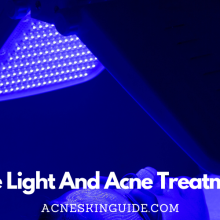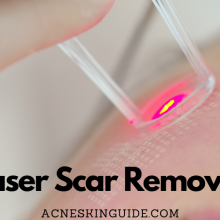Antibiotics For Acne – Benefits and Side Effects? | AcneSkinGuide
Acne is a common skin condition for which antibiotics are often prescribed to combat inflammation and bacterial growth in moderate to severe cases. However, antibiotic use carries potential side effects like gastrointestinal issues, photosensitivity, yeast infections, and the concerning risk of contributing to antibiotic resistance. Antibiotics treat acne symptoms but do not address underlying hormonal or genetic causes, so the condition may recur after stopping treatment.
Responsible usage following proper dosing and completing full courses is crucial to minimize resistance. The article explores when antibiotics are prescribed, the types used, their side effects, antibiotic resistance concerns, treatment duration, limitations, and the need to consider alternative or complementary therapies like hormonal treatments, chemical peels, or light therapies for comprehensive long-term acne management under medical guidance.

Antibiotics For Acne – A Comprehensive Guide
Acne, a common skin condition affecting millions worldwide, can be a frustrating and confidence-damaging issue. While various treatments exist, antibiotics are often prescribed for moderate to severe cases to combat inflammation and bacterial growth. However, their use comes with potential side effects and the risk of contributing to the growing problem of antibiotic resistance. In this article, we explore when antibiotics are prescribed for acne, the types used, their side effects, and the importance of responsible usage and exploring alternative treatments.
When Are Antibiotics Prescribed for Acne?
Antibiotics are typically recommended for moderate to severe inflammatory acne, such as cystic or nodular acne, after attempting topical treatments like retinoids or benzoyl peroxide. Treatment guidelines suggest combining antibiotics with other acne medications for optimal results. Dermatologists may prescribe antibiotics for severe, persistent acne that hasn’t responded to other therapies.
Types of Antibiotics Used for Acne
There are two main categories of antibiotics used for acne: oral and topical. Oral antibiotics, including tetracyclines (doxycycline and minocycline) and macrolides (erythromycin), work systemically by circulating through the bloodstream. Topical antibiotics, such as clindamycin and erythromycin, are applied directly to the skin. In some cases, a combination of oral and topical antibiotics may be prescribed for enhanced effectiveness.
Side Effects of Acne Antibiotics
While antibiotics can be effective in treating acne, they are not without potential side effects. Gastrointestinal issues like diarrhea and the risk of developing Clostridioides difficile infection are common concerns with oral antibiotics. Photosensitivity and yeast infections are also potential side effects. However, the most significant concern surrounding antibiotic use is the development of antibiotic resistance, not only in acne-causing bacteria but also in other bacteria, posing broader health risks.
Antibiotic Resistance and Acne
The overuse or misuse of antibiotics can lead to the emergence of antibiotic-resistant strains of acne-causing bacteria, making it increasingly difficult to treat the condition effectively. This issue has raised concerns among healthcare professionals, prompting a search for alternative treatments and a more judicious approach to prescribing antibiotics.
Duration and Proper Use of Antibiotic Acne Treatment
Antibiotic courses for acne typically last several months, and it is crucial to complete the full course as prescribed to prevent the development of antibiotic resistance. Patients must also follow dosage instructions carefully and be aware of potential drug interactions. Proper usage can help minimize the risk of antibiotic resistance and ensure the most effective treatment.
Limitations of Antibiotic Treatment for Acne
While antibiotics can provide temporary relief from acne symptoms, they do not address the underlying hormonal or genetic causes of the condition. As a result, acne may recur once antibiotic treatment is discontinued. This limitation highlights the need for a comprehensive approach that addresses the root causes of acne.
Alternative and Complementary Treatments
Given the potential side effects and limitations of antibiotic treatment, alternative and complementary therapies are gaining attention. These include hormonal therapies, chemical peels, light therapies (such as photodynamic therapy or laser treatments), and emerging treatments like spironolactone or isotretinoin. These alternatives can be used alone or in conjunction with antibiotics under proper medical guidance.
Conclusion
Antibiotics can be an effective treatment for moderate to severe acne, but their use should be carefully considered and monitored. Potential side effects, the risk of antibiotic resistance, and limitations in addressing underlying causes highlight the need for responsible prescribing practices and exploring alternative or complementary treatments. Under the guidance of a dermatologist, a comprehensive approach that combines various therapies may offer the most effective and sustainable solution for long-term acne management.
FAQs and Answers
How long does it typically take for antibiotics to start working for acne?
It typically takes 4-8 weeks for antibiotics to start showing significant improvement in acne. Here are some more details:
- Antibiotics take time to reduce the population of acne-causing bacteria on the skin and reduce inflammation.
- Most dermatologists recommend allowing 6-8 weeks to see the full effects of an antibiotic regimen for acne.
- In some cases, patients may start to see minor improvements like a decrease in new breakouts within 4-6 weeks of starting antibiotics.
- Cystic or nodular inflammatory acne lesions may take longer to resolve, sometimes 10-12 weeks, even after the antibiotic has started working.
- If there is no improvement at all after 8-12 weeks, the dermatologist may adjust the antibiotic dose or switch to a different medication.
The key is to be patient and consistent with taking the full course as prescribed. Quitting antibiotics too soon can allow remaining bacteria to become resistant. With time and compliance, most patients see a significant clearing of their acne while on an appropriate antibiotic regimen.
Can antibiotics for acne be taken during pregnancy or while breastfeeding?
Taking antibiotics for acne during pregnancy or while breastfeeding requires careful consideration and consultation with a doctor, as some antibiotics may pose risks to the developing fetus or nursed infant.
During Pregnancy:
- Tetracycline antibiotics (e.g., doxycycline, minocycline) are generally not recommended during pregnancy as they can potentially cause discoloration of the baby’s teeth and inhibit bone growth.
- Erythromycin and azithromycin are considered safer options during pregnancy, but they may not be as effective for acne treatment.
- Topical antibiotics like clindamycin are likely safer than oral antibiotics during pregnancy.
While Breastfeeding:
- Most antibiotics used for acne are considered compatible with breastfeeding, as only small amounts are transferred through breast milk.
- Erythromycin and azithromycin are generally considered safe for nursing mothers.
- Tetracyclines should be avoided while breastfeeding, as they can cause tooth discoloration and inhibit bone growth in infants.
- Clindamycin topical gel is likely safe, but oral clindamycin may pose some risks.
It’s crucial to consult with a dermatologist or obstetrician before starting any antibiotic treatment for acne during pregnancy or breastfeeding. They can evaluate the potential risks and benefits and recommend the safest and most effective treatment options. Alternative acne treatments, such as topical retinoids or benzoyl peroxide, may also be considered during these periods.
What are the potential interactions between antibiotics for acne and other medications or supplements?
There are several potential interactions between antibiotics used for treating acne and other medications or supplements that patients should be aware of:
- Birth control pills: Some antibiotics like rifampin can decrease the effectiveness of oral contraceptives, increasing the risk of pregnancy. Adjustments in dosage or additional contraceptive measures may be needed.
- Vitamin K: Antibiotics can interfere with the action of vitamin K, which is important for blood clotting. This can increase the risk of bleeding, especially when taking blood thinners like warfarin.
- Antacids: Doxycycline and other tetracycline antibiotics can bind to calcium, magnesium, and aluminum found in antacids, reducing their absorption and effectiveness.
- St. John’s Wort: This herbal supplement can decrease the levels of certain antibiotics like erythromycin in the body, reducing their efficacy.
- Retinoids: The combination of oral antibiotics and retinoids like isotretinoin can increase the risk of intracranial hypertension (pseudotumor cerebri).
- Alcohol: Consuming alcohol while taking some antibiotics like metronidazole can cause nausea, vomiting, and other unpleasant side effects.
- Probiotics: While generally considered safe, probiotics may interact with certain antibiotics and reduce their effectiveness by competing for absorption.
It’s essential for patients to inform their healthcare providers about all medications, supplements, and vitamins they are taking to identify and manage potential interactions. Dosage adjustments, timing separations, or alternative treatments may be recommended to minimize the risk of interactions and ensure the safety and efficacy of the antibiotic therapy for acne.
Are there any age restrictions or considerations for using antibiotics for acne?
Yes, there are some age-related considerations when prescribing antibiotics for acne:
Children:
- Tetracycline antibiotics like doxycycline and minocycline are generally avoided in children under 8 years old due to the risk of permanent tooth discoloration and potential effects on bone growth and development.
- Erythromycin or other macrolide antibiotics may be used with caution in young children for acne treatment.
- Topical antibiotics like clindamycin are often preferred over oral antibiotics for younger children with acne.
Adolescents:
- Tetracycline antibiotics are often prescribed for adolescents with moderate to severe acne, as they are generally considered safe for use in this age group.
- Dosages may need to be adjusted based on the adolescent’s weight and stage of development.
Adults:
- Most oral and topical antibiotics used for acne can be prescribed for adults without significant age-related restrictions.
- However, healthcare providers may consider potential drug interactions and existing medical conditions when prescribing antibiotics for older adults.
Pregnancy and Breastfeeding:
- As mentioned earlier, tetracycline antibiotics are generally avoided during pregnancy and breastfeeding due to potential risks to the developing fetus or nursed infant.
- Erythromycin or azithromycin may be safer options during these periods, although their efficacy for acne may be limited.
It’s essential for healthcare providers to carefully evaluate the patient’s age, stage of development, potential risks, and benefits before prescribing antibiotics for acne. Close monitoring and follow-up are recommended, especially in younger patients, to ensure the safe and effective use of antibiotic therapy.
What are the long-term effects of using antibiotics for acne, particularly on gut health and the microbiome?
The long-term use of antibiotics for treating acne can have potential impacts on gut health and the microbiome. Here are some of the key effects:
- Disruption of gut microbiome:
Antibiotics can disrupt the delicate balance of beneficial bacteria in the gut microbiome, which plays a crucial role in digestion, nutrient absorption, and immune function. This disruption can lead to gastrointestinal issues, such as diarrhea, constipation, bloating, and abdominal discomfort. - Antibiotic resistance:
Prolonged antibiotic use can contribute to the development of antibiotic-resistant bacteria in the gut. These resistant strains can persist even after the antibiotic course is completed, potentially leading to future challenges in treating infections. - Increased risk of Clostridioides difficile infection:
Antibiotics can create an environment in the gut that allows the overgrowth of harmful bacteria like Clostridioides difficile (C. diff), which can cause severe diarrhea and colitis, especially in vulnerable populations. - Reduced diversity of gut microbiome:
Long-term antibiotic use can reduce the overall diversity of the gut microbiome, which is associated with various health problems, including autoimmune disorders, metabolic diseases, and even mental health issues. - Yeast overgrowth:
Antibiotics can also disrupt the balance of yeast in the gut, potentially leading to overgrowth of Candida species, which can cause fungal infections and other health problems.
While the gut microbiome can often recover after antibiotic treatment, some studies suggest that prolonged or repeated antibiotic courses may lead to more persistent changes in the gut microbiome composition.
To mitigate these potential long-term effects, healthcare providers may recommend:
- Using antibiotics judiciously and for the shortest duration necessary
- Considering non-antibiotic alternatives for acne treatment when possible
- Replenishing the gut with probiotics or fermented foods during and after antibiotic treatment
- Maintaining a healthy, fiber-rich diet to support gut health
It’s important for patients to discuss the potential long-term effects with their healthcare providers and weigh the risks and benefits of prolonged antibiotic use for acne management.






